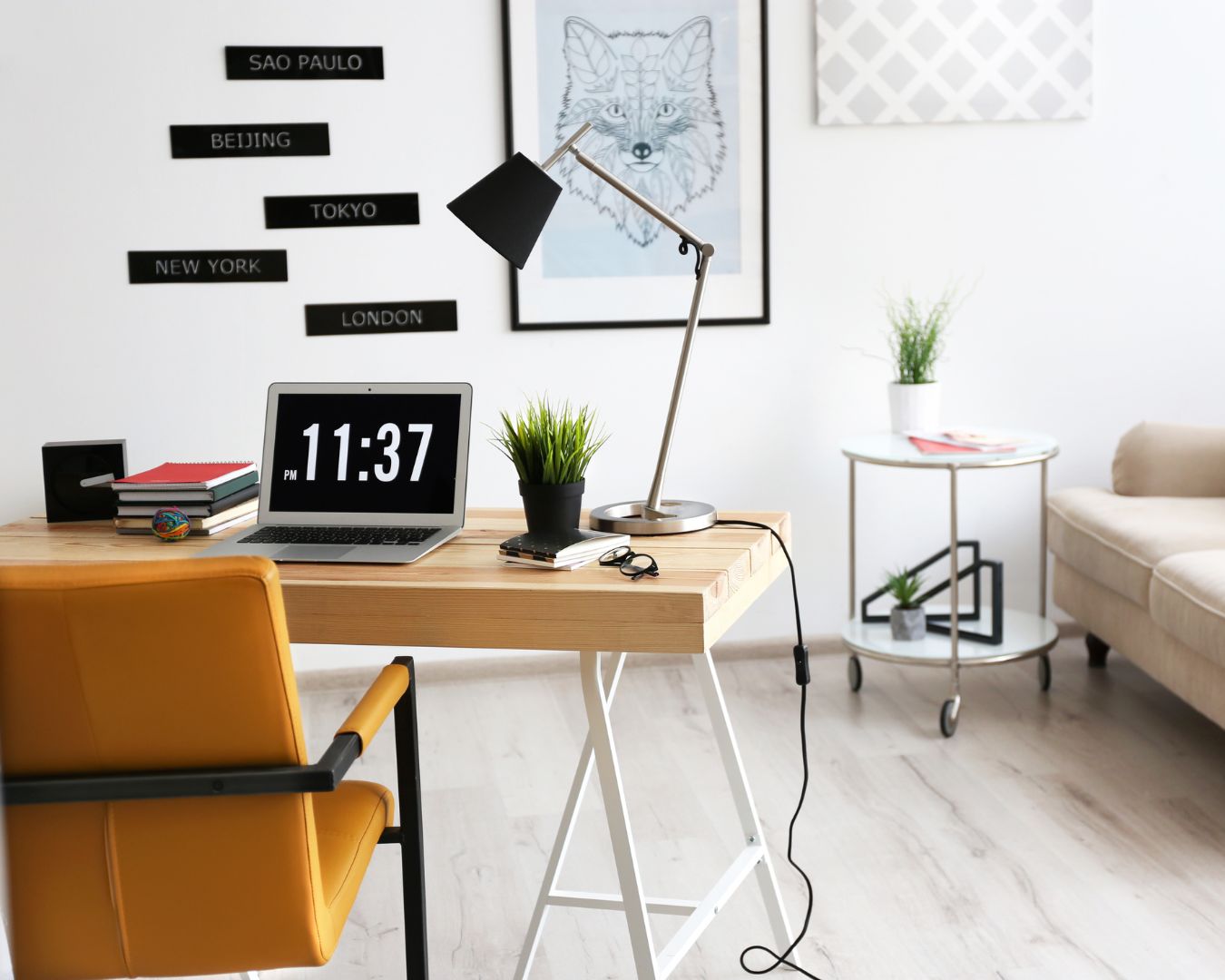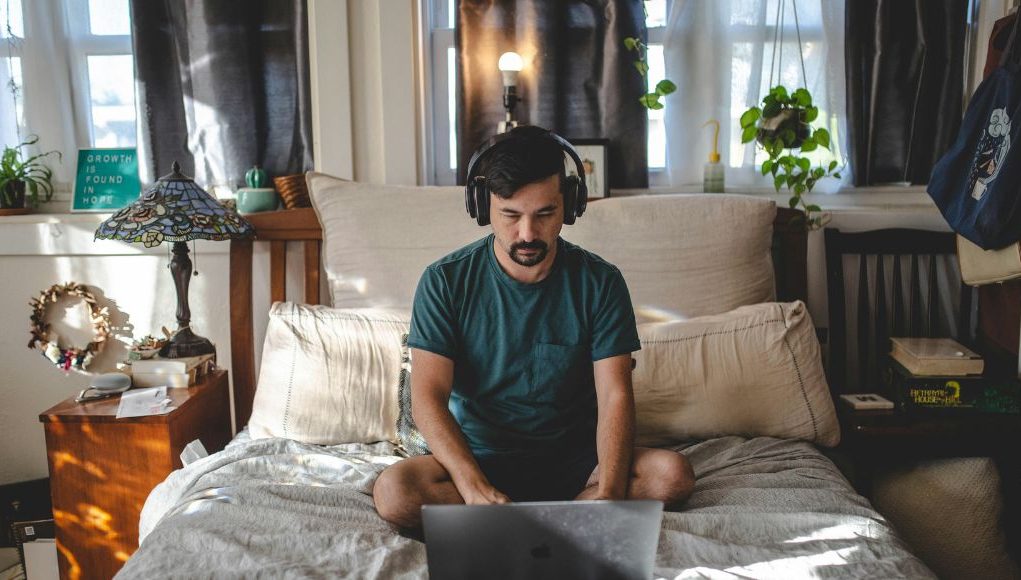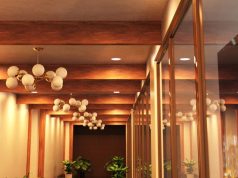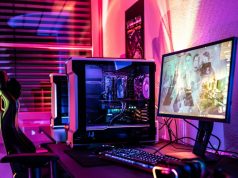Working from home is, oh, such a dream. Get this: no traffic, no rushing in the shower (cos now you don’t need to), and no… focus? What could be the issue? Is work from home truly the bane of productivity? Or is it something else?
What if we tell you that a lot of times, it’s not the daily UPS deliveries or the frequent tea breaks? Nope, but we won’t judge. What if we tell you that what’s affecting your productivity is as simple as your home office lighting setup? Well, simple is an understatement, since it can be a little bit more complicated than you think.
And that’s what we’ll shed some light on in this post. How do you transform your work nook into a focus-friendly, eye-happy zone? Let’s flip the switch and find out.
Why Lighting Affects Productivity
Alright, so you find yourself working in your “home office” (today, it’s at one end of the dining table), and you have an overhead bulb as your primary light, casting shadows like you’re about to tell ghost stories, not write emails. Then, after a couple of hours, unsurprisingly, your eyes start to burn.
Did you get the picture we were trying to paint here?
Lighting isn’t just about seeing things. It can affect more than just your vision. Good lighting can keep you alert, focused, and even in a better mood. Bad lighting? It’s the fast track to squinting, yawning, and wondering if it’s nap o’clock again.
Let’s break down what’s happening here:
- Poor lighting is a domino effect that causes your eyes to strain, your posture to falter, and your brain to tire. Did it ever occur to you that a lot of those burnouts were triggered by poor lighting?
- Dim environments signal your body to produce melatonin—aka the sleepy hormone. Sleepy = unproductivity.
- Warm lights at home help you wind down (save that for 6 PM)
Your lighting is essentially your direct line of connection with your focus and productivity.
Task Lighting for Desk Work
Is overhead lighting enough lighting for a home office? Just barely. Not to say that it’s not important, because it really is. But for doing some work, especially on a desk, what you need more of is task lighting.
Need to check off those to-do list items fast? Task lighting is your guy, giving focused and purposeful illumination. Think of it like a spotlight for your hands, books, or keyboard. In short, it’s your productivity sidekick. The Robin to your Batman, if you will.
Tips for Great Task Lighting:
- Position it opposite your writing hand to avoid shadows when writing.
- Choose a shade that diffuses light, avoiding harsh spots that burn your eyeballs (gently speaking).
- Use adjustable arms or goosenecks for easy pointing exactly where you need them.
Choosing Colour Temperature and Brightness
Have we mentioned yet that the colour of your light significantly affects your mood and focus, and in turn affects your productivity? That’s right. Getting the wrong light colour can be catastrophic—for your productivity. So make sure that you burn this cheat sheet into the back of your eyes:
2700K–3000K (Warm White): Cosy, relaxing—great for reading novels, not reports.
3500K–4000K (Natural White): Neutral, balanced—ideal for task-heavy workdays.
5000K–6500K (Cool White): Crisp, energising—best for analytical or detailed work.
Colour temperatures are measured by Kelvin, hence the “K” after each number.
This might come as a surprise (or not), but brightness matters too. This is measured in Lumens. Your work office lights need to be bright enough to work, but not so bright that you feel interrogated. That’s why neutral, balanced light (3500K–4100K) is the perfect temperature for a work setting.
Preventing Glare on Screens
Have you ever experienced typing away on your laptop, and the next thing you know, you’re dodging solar flares off your monitor? And too much glare is not good not only for your focus but also for your eye health—too much glare results in eye fatigue, strain, and headaches.
Glare-Busting Tips:
- Place your monitor perpendicular to windows—never directly in front or behind.
- Use sheer curtains to diffuse harsh sunlight.
- Opt for matte screen finishes or grab an anti-glare screen protector.
- Position the task lighting desk to the side, not aimed at the screen.
Preventing glare is simply a matter of understanding light reflections. Learn how to avoid positioning your screen—and your eyes—away from the trajectory of bright lights.

LED Desk Lamps and Adjustable Options
How do you make sure you don’t have poor lighting in your home office? By adding a work lamp to your desk, of course!
But sadly, not all lamps are created equal. And if you’re still using a two-decade-old halogen lamp, the flickering light itself is more than enough to distract you, not to mention the loud hum… but anyway, it’s time for an upgrade!
LED desk lamps are your bread-and-butter when it comes to working lights for your… well, desk. They’re great since they’re:
- Energy-efficient (your wallet will literally high-five you)
- Cool to the touch (no more accidental finger burns)
- Long-lasting (they might even outlive your houseplants)
- Adjustable in brightness and colour temperature
And even better? Some come with more features, like:
- USB charging ports (because we all never have enough gadgets)
- Touch or voice control (yes, you can tell your lamp who’s the boss)
- Auto-dimming based on ambient light (like magic, but with science and sensors)
Look for designs with flexible necks, rotating heads, and solid base support. Bonus points if it doesn’t take a PhD to assemble (we’re looking at you, IKEA).
Fun Extras: Light Your Mood Too
Now that the technical stuff is out of the way, let’s talk about vibe.
The best thing about working from home? It gives you the freedom to create a space that sparks joy and focus. Not all offices give you creative freedom to design your space to suit your needs to stay focused. But in your home office? It’s your blank canvas.
The good news is that you don’t even need to do a complete renovation to “upgrade” your home office. All you need is light—properly installed, of course.
Here’s how to add personality without sacrificing function:
- LED light strips behind your monitor or under shelves = instant cool points
- Salt lamps or Edison bulbs for ambient glow during off-hours
- Smart bulbs you can control from your phone (or yell at from across the room)
- Clip-on ring lights for every Zoom meeting that could have been an email instead
Mix practical lighting with a dash of whimsy, and your workspace starts to feel less like a tax office and more like a coffeehouse with Wi-Fi and ambition.
Final Thoughts
If you’ve ever ended your workday rubbing your eyes, hunched like a question mark, and wondering why you didn’t get more done—it’s probably not you. It’s your lighting.
And we get it. It could be something else that’s causing your productivity to drop. But that’s exactly why it’s easy to miss lighting as a problem, because no one thinks it is!
The good thing is that ergonomic lighting isn’t about buying expensive gadgets or redesigning your home. It’s about layering light that works with you, not against you.
Here’s a little checklist:
- Add task lighting for clarity
- Choose bulbs with the right colour temperature and brightness
- Avoid glare like your productivity depends on it (it does)
- Embrace LED lamps with flexible features
- And finally—make it yours. Light the way you like.
After all, your home office should work for you, not the other way around, and certainly not for your boss.
Discover how you can make the lighting in the other parts of your house better here: Everything You Need to Know About Lighting Every Room of Your Home.
Happy lighting! And may your inbox always be a little less full.














